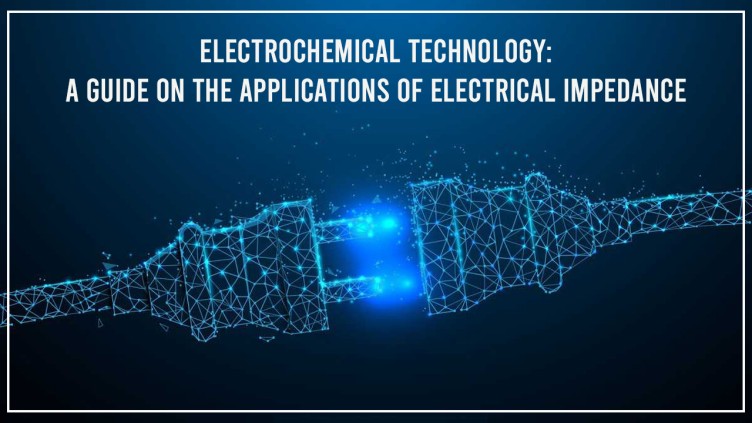As an important characteristic parameter of electrochemical systems, impedance has always been regarded as one of the most powerful electrochemical analysis tools. The impedance of the battery reflects the resistance of charged particles to the movement of the battery. Impedance can provide a more comprehensive understanding of the state of the battery and thus support battery management. In this article, we have mentioned the applications of electrical impedance.

Temperature Estimation
The temperature has a great influence on the performance of the battery. Working at an unsuitable temperature, the battery will face the problem with life and safety. Therefore, for BMS, real-time monitoring of battery temperature is essential for efficient management. Temperature measurement with sensors is the most straightforward. Most of these methods can only measure the temperature of the tabs or surfaces. However, during the high-rate charging and discharging process, the surface temperature is very different from the internal temperature of the battery. Relying on surface temperature monitoring still faces security issues caused by excessive internal temperatures. Therefore, internal temperature estimation has been extensively studied. Temperature estimation based on impedance is an important technical route. However, temperature changes are often more drastic under dynamic conditions. The influence of dynamic conditions on temperature characterization impedance angle and the applicability of this method under dynamic conditions are still not well studied.
State of charge estimation
Accurate estimation of SOC is important to prevent battery overcharge and over-discharge. For model-based SOC estimation methods, the estimation accuracy is often affected by the model accuracy and parameter identification algorithms. In particular, for lithium iron phosphate batteries, for example, model-based SOC estimation is more challenging due to their very flat SOC-OCV curve. Impedance, as a quantity closely related to the overcharge of the electrodes inside the battery, is also very closely related to SOC. Many impedance-based SOC estimation methods have been proposed. Many methods for SOC estimation of lithium iron phosphate batteries using impedance have been reported in the literature, showing the effectiveness of this method. However, the normal charge-discharge process of estimating SOC without interrupting batteries has rarely been reported in the literature. Much remains lacking in this regard.
Estimation of aging state
Battery aging state estimation is of great significance for both online management and decommissioning residual value assessment. Battery aging is a complex phenomenon involving many processes. Impedance can reflect the internal electrode process characteristics, and SOH estimation using impedance has been widely reported. It is a common technical route to use ECM to analyze battery EIS at different aging stages for SOH estimation. Battery ohmic resistance, SEI resistance, load transfer resistance, etc. can all be used to characterize the aging state of the battery. These resistors describe the aging process of the battery in different dimensions. Some aging mode analyses based on these resistors have also been proposed. For actual automotive application scenarios, how to quantify and exclude the influence of battery temperature and SOC on aging characterization impedance is still not well studied.

Troubleshooting in Applications of electrical impedance
(1) Overcharge and over-discharge diagnosis. By using ECM to fit EIS in the case of over amp, it can be found that the ohmic resistance, load transfer resistance, SEI resistance, and Warburg resistance have all changed greatly. Furthermore, through the three-electrode experiment, it is found that although the negative electrode contributes less to the impedance of the battery, it has a great influence on the battery impedance under the condition of over-discharge. Literature has also found that in the case of battery overcharge, the positive impedance and the negative impedance of high frequency have changed significantly.
(2) Lithium precipitation diagnosis. It is easy to induce lithium evolution during high-rate charging or low-temperature charging, which is an important reason for the deterioration of battery safety and life. It is of great significance to realize the online detection of lithium evolution. Studies have found that the decrease in battery impedance after the end of large-rate charging is related to lithium evolution. The change in the trend of 3s DC resistance with SOC during charging is also related to lithium evolution.
(3) Internal short circuit diagnosis. An internal short circuit is one of the important causes of the thermal runaway of batteries. In a research, they used the external shunt resistor of the battery to simulate the leakage current of the short circuit in the battery and analyzed the changes in the impedance of the battery at different frequencies under different leakage currents. It is found that the larger the leakage current, the impedance of the low-frequency diffusion section of the battery will bend to the solid axis, and the more obvious the influence will be, which provides an idea for the diagnosis of internal short circuits.
Conclusion
Battery impedance is very sensitive to battery status and fault, which also makes impedance have a wide Applications of electrical impedance scenarios. At present, a lot of research has been carried out. However, the influence of other factors in state estimation or fault diagnosis on characteristic impedance still needs to be further revealed and removed to improve the applicability of complex working conditions on-board.
About Semco – Semco University is an educational website that is catering to the needs of students and researchers. Offering information on Lithium-ion batteries. The resources and content are compiled from various sources including manufacturers, test labs, crowdsourcing, etc. Our motto is to provide a viable resource for companies, students, and enthusiasts interested in participating in the Li-ion Battery industry. Our initiative is to make people aware of the benefits, and opportunities of the revolutionary Lithium Batteries for multiple applications
For More Updates Follow Us

